The bamboo installation “Tripa de Gallina” (Guts of the Rooster) illustrates the disconnection between humans and their surroundings.
The Philippines has opened its National Pavilion at the ongoing 18th International Architecture Exhibition at Venice Biennale, which runs until November 26, at the main exhibition space Arsenale.
The pavilion features “Tripa de Gallina: Guts of Estuary” by The Architecture Collective—composed of Bien Alvarez, Matthew Gan, Ar. Lyle La Madrid, Noel Narciso and Arnold Rañada—and co-curated by Sam Domingo and architect Choie Funk.
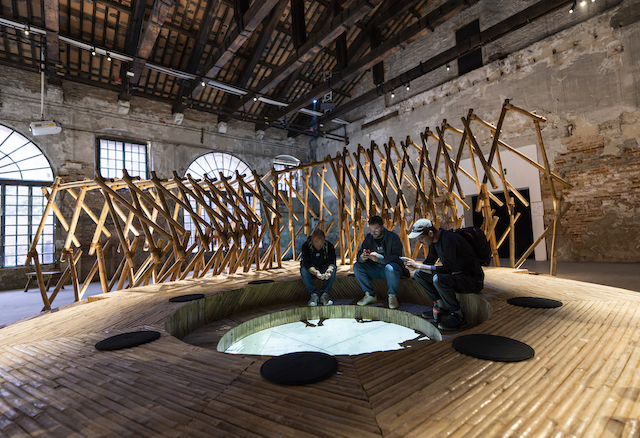
Tripa de Gallina (translated as “guts of the rooster”) is the longest estuary in Metro Manila, and serves as a tributary among larger bodies of water in the area. Over the centuries, the estuary has been functioning mainly as a channel to mitigate flooding and drain water from various parts of the city, but has eventually become congested with residents and subsequently, polluted with trash.
The exhibition addresses the unsustainable environmental and social circumstances in the area and proposes an architectural solution that highlights the significance of empathy, collaboration, reflection and gathering.
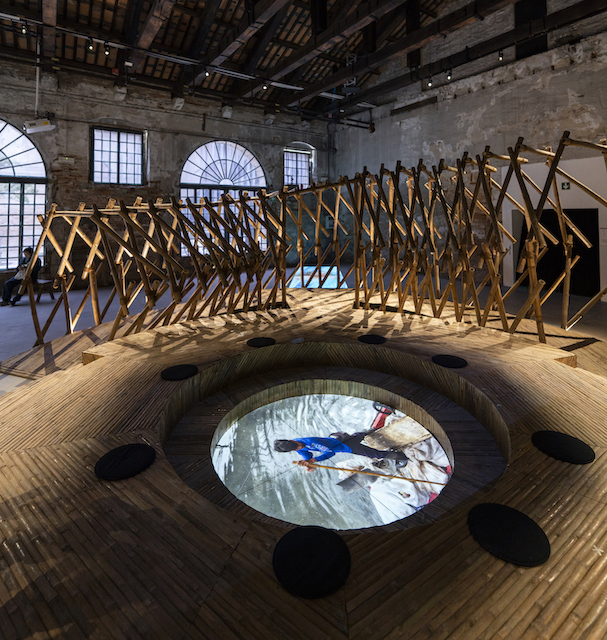
The featured exhibition offers a diagnosis of the water’s condition and a prognosis of the people’s future. In a procedure of modular urban acupuncture materialized by a bamboo structure that serves as a place of gathering and investigation, the Pavilion inspects the estuary’s guts: a flawed ecology of humans, waters, and dregs. It serves as a buoy for this mesh to be carefully unraveled and sustainable mended through collaborative action in the name of resilience.
The exhibition looks at the unsustainable environmental and social circumstances in the area and proposes an architectural solution.
The windows in the installation provide a screen on which moving archival materials play out, testifying to a tenacious urban struggle in history. The narrative leads to the center when an immersive audio-visual encounter with the estero lurks day and night, where both videos were directed by filmmaker and educator Jag Garcia. From the groundwork, a lively prospect of the state of the entire ecology is imagined through the structure’s ethnographic projections.
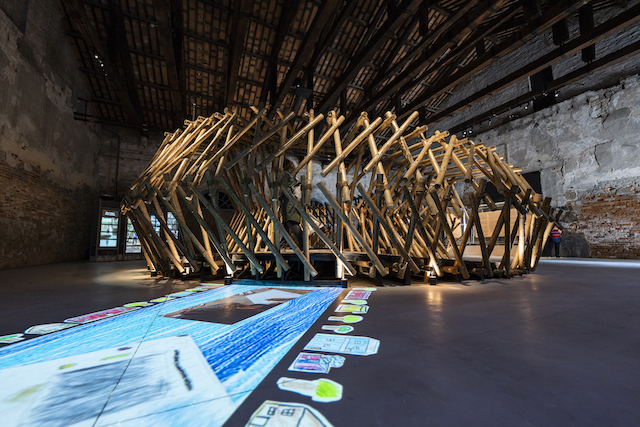
The bamboo structure stems from the intention of the members of The Architecture Collective, a group of independent practitioners from the fields of architecture and community development who have collaborated to create projects that are responsive, seeking to empathize and deeply connect with the people they are building for, while leveraging on architecture as an enabler for social connection and sustainability.
With its roots as a project in 2018, the group was steered by architect Choie Funk to explore the circumstances surrounding Tripa de Gallina and its residents, with the hopes of creating a space that will cultivate a deeper sense of care and collaboration among the members of the community.
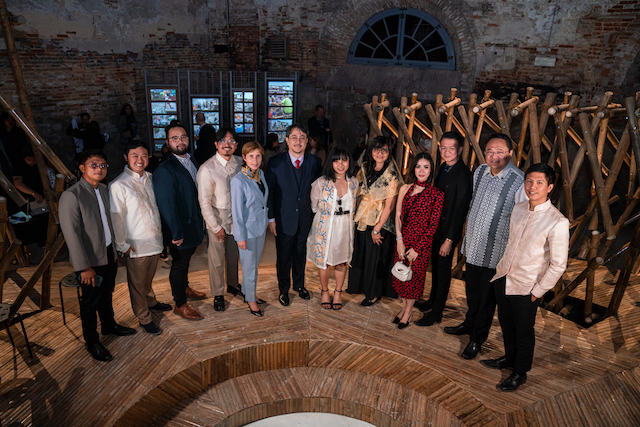
The pollution in the waterway illustrates an issue that has been aggravated over the past century, indicating a seeming disconnection between humans and their surroundings. Alvarez, the computational designer for the project shares his aspirations, “It’s one step to more action for our country to realize that that water is a part of our lives more than most nations. Hopefully, it’s the thing that makes people realize that we should have a relationship with water.” Narciso, the project coordinator for TAC reinforces this, “I see it is a return to the water. Water is becoming less accessible every day. And I think if we don’t return to it, or put it as a guiding principle in design, which is the core resource of humanity, then it is of consequence.”
The members of TAC as well as the co-curators approach Tripa de Gallina: Guts of Estuary as an attempt to create a space that will offer an opportunity for its residents to gather, prompting more care and collaboration towards one another and their surroundings. It is a speculation of what can be, as well as a work in progress that seeks to examine the future, the community and their relationships.
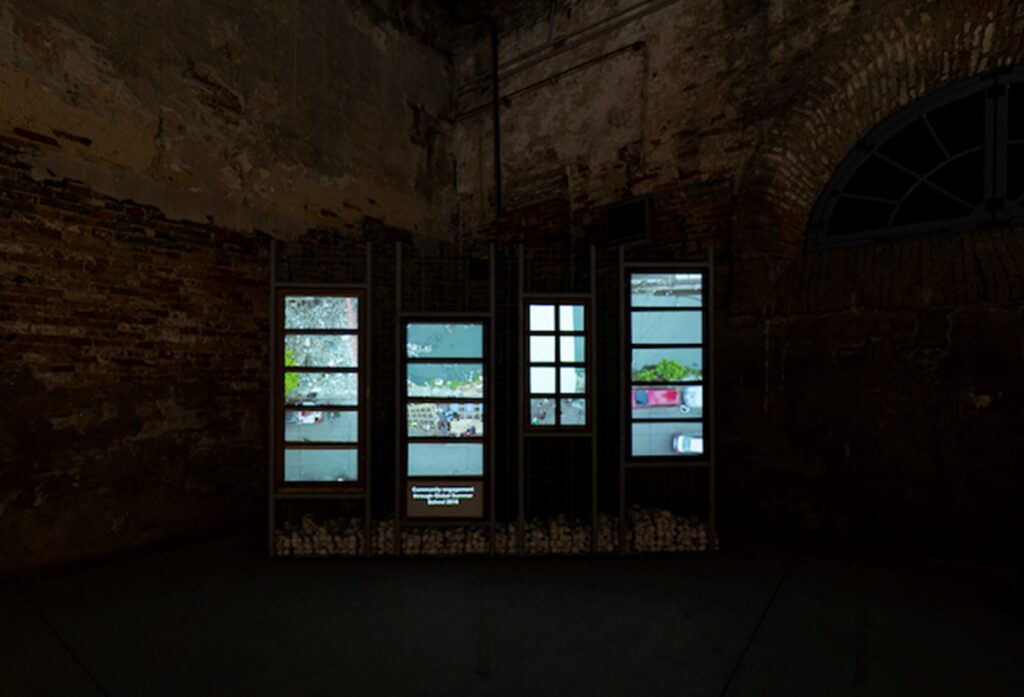


Senate President Pro Tempore Loren Legarda, chief advocate of the Philippine participation in the Venice Biennale, emphasizes the urgency for citizens to be more mindful of their relationship towards the waste they produce, as well as their relationships with their environment.
As the author of the Ecological Solid Waste Management Act, she says, “The problem affecting Estero Tripa de Gallina—and many other estuaries and waterways in the country—is no longer merely a cause for concern, but a clear and urgent emergency. The Philippine Pavilion creates a pathway for exploration and discussion on how we can take intentional action towards a more sustainable future. This exhibition serves as a foundation for the hope of cleaner surroundings and stronger relationships.”



“Through the exhibition, the world will have the opportunity to understand the realities faced by Filipinos and realize that this issue is something that they too are facing, potentially cultivating more in-depth and meaningful discussions that leads to collective action and a more sustainable future,” shares National Commission of Culture and the Arts Chair and Philippine Pavilion Commissioner Victorino Mapa Manalo.
The Philippine participation at the 18th International Architecture Exhibition at Venice Biennale is a collaborative undertaking of the National Commission for Culture and the Arts (NCCA), the Department of Foreign Affairs (DFA), and the Office of Senate President Pro Tempore Loren Legarda. The Commissioner of the Philippine Pavilion is Victorino Mapa Manalo, Chairman of the NCCA.



The Philippine Pavilion will also be made accessible through its digital programs and virtual tours, which will be accessible to the public, anywhere in the world. To learn more about this, visit philartsvenicebiennale.org. See updates on Facebook and Instagram via @philartsvenice.




